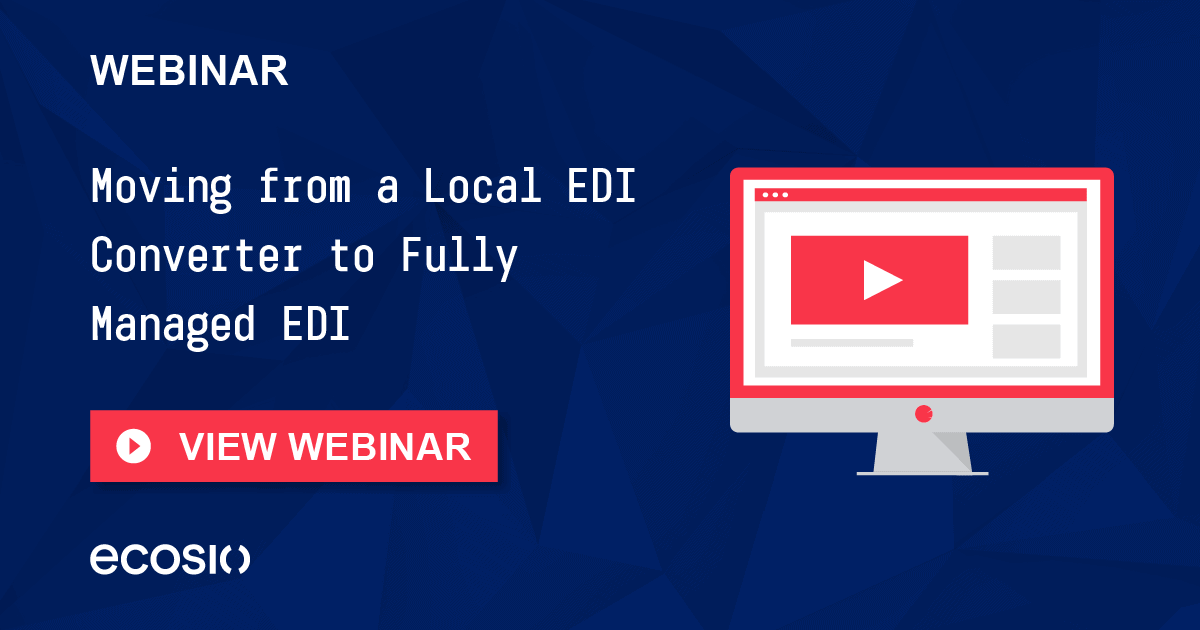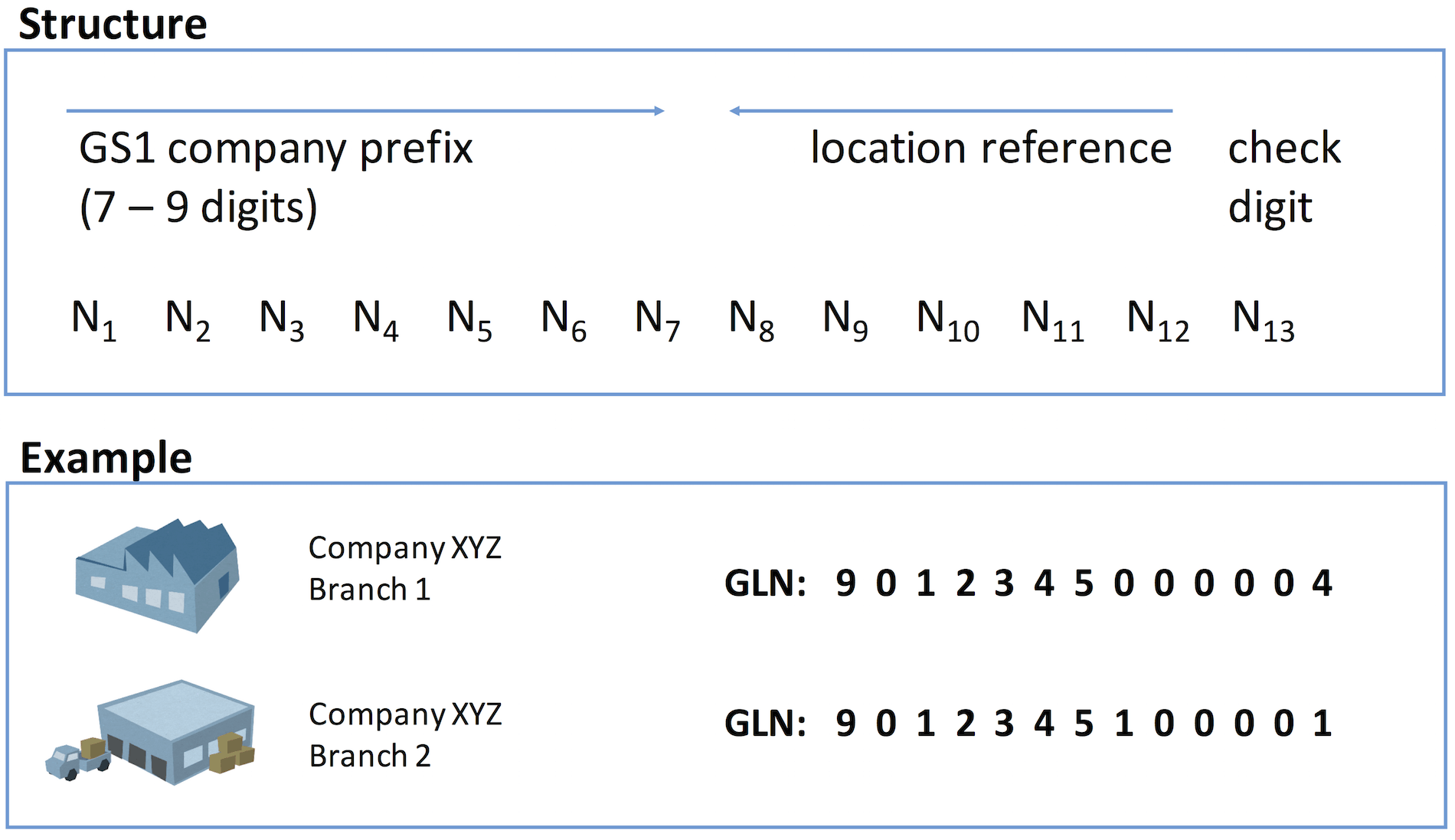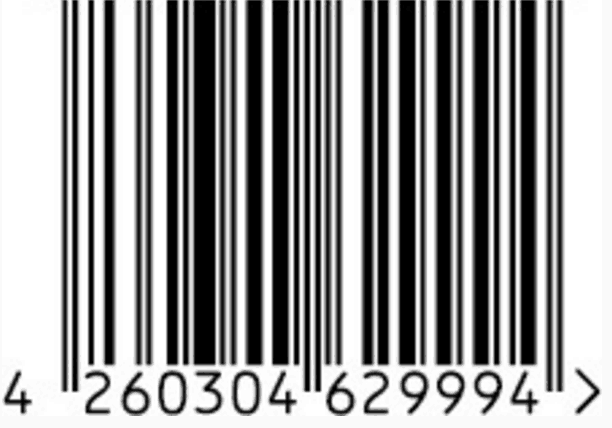What does GLN stand for?
GLNs — short for Global Location Number — are used for the unique and unambiguous identification of legal entities and physical locations.
Legal entities may for instance be companies, administration bodies, customers, suppliers, service-providers, banks, etc. Physical locations may be addresses, single buildings, storage sites — even a single loading platform in a cross-docking warehouse. In addition GLNs may be used as unique identifiers for participants in electronic data interchange (EDI) — similar to email addresses in an email system.
The often used term GLN-number is actually wrong, since number is already contained in the acronym GLN. In the following only the term GLN is used.
For small and medium-sized businesses a single GLN is usually sufficient. Enterprises with several branches and large corporations require multiple GLNs. A reference value: Billa (a subsidiary of the German REWE corporation in Austria) has more than 1,000 GLNs in use in Austria. In Germany, EDEKA, which is by far the largest supermarket, uses more than 10,000 GLNs for the different branches, ware houses, cross docking locations, etc.
Today one may sometimes hear people affiliated with electronic data interchange talking about International Location Numbers (ILN). ILN is the old term for a GLN.
Learn how fully managed EDI could help to boost your business
What is the structure of a Global Location Number?
A GLN is a 13-digit number consisting of a GS1 company prefix, a location reference, and a check digit. The following figure shows the structure of a GLN and two exemplary GLNs.
The GS1 company prefix is assigned by a GS1 member organization to a specific subscriber (e.g., a company).
The location reference is assigned by the company itself to identify a specific location.
The check digit is calculated from the first twelve digits and helps to ensure the integrity of the number.
One may not directly infer the company to which a GLN is assigned to, from the GLN digits directly, i.e., no company information is “coded” in the GLN. Instead one must fetch a directory service, offered by GS1, in order to retrieve the company details for a given GLN. The GS1 directory services are called GEPIR (Global Electronic Party Information Register).
Note, that not all companies publish their GLNs in the GEPIR directories. Although most of the companies do, there are some which deliberately choose to conceal the GLNs and the associated company details.
The GS1 company prefix forms the basis for additional identifiers, issued by GS1. For example GTINs (Global Trade Identification Numbers) or SSCCs (Serial Shipping Container Code) are generated on the basis of a GS1 company prefix.
GTINs are used for the unique and unambiguous identification of products and services. Just take a closer look at a bar code on an arbitrary consumer product near you — you’ll note the number below the bar code — this is a GTIN.
SSCCs, on the other hand, are used for the unique identification of logistic units, such as pallets, cases, cartons, or air traffic containers.
Why do I need a GLN when I have a postal address?
Postal addresses are indeed important for a company — the help clients to find your company using their GPS-based navigation device, they ensure that postal letters of your suppliers and customers end up in the right post box, etc. However, postal addresses are a bad identifier when it comes to electronic processes.
The following example shows the dilemma with postal addresses:
Store John Doe, L.A. branch, 4711 Park Avenue, CA 90210
John Doe Store, Los Angeles branch, 4711 Park Ave. Beverly Hills, CA 90210
A human quickly realizes that both addresses are semantically identical, but only written in a different way. IT systems, however, rely on unique and unambiguous identifiers. Thus, postal addresses represent bad identifier types, when it comes to IT-systems.
That’s where a Global Location Number comes into play.
In order to uniquely and unambiguously identify a company (or parts of a company) in an IT system, GLNs are used.
Who guarantees, that a GLN is unique?
GLNs are issued by Global Standards One (GS1) – usually by one of the national GS1 organizations. In the United Kingdom this is for instance GS1 UK or in the United States GS1 US. European examples include GS1 Germany, GS1 Austria, or GS1 Switzerland.
How much does a GLN cost?
GLNs are issued by the local GS1 organizations in the different countries. Thus, prices for GLNs may vary from country to country. The following prices are from GS1 Germany and may serve as a reference for the prices in other countries.
Currently, GS1 Germany offers GLNs in three different contingents. Depending on the type of GLN, different amounts of article numbers (GTIN) and logistic unit identifiers (SSCC) may be generated.
Small
Recommended for small enterprises with a limited set of articles.
Length of base number: 9 digits
Capacity: 1,000 article numbers and 10 million logistic units.
Costs: 230 EUR plus VAT
Medium
Recommended for medium-sized businesses.
Length of base number: 8 digits
Capacity: 10,000 article numbers and 100 million logistic units
Costs: 330 EUR plus VAT
Large
Recommended for large businesses
Length of base number: 7 digits
Capacity: 100,000 article numbers and 1 billion logistic units
Costs: 530 EUR plus VAT
Where can I apply for a GLN?
GLNs are issued by GS1. Contact your national GS1 office in order to apply for a GLN.
GLN, and then?
If you plan to use a GLN for your electronic data interchange processes, you require an EDI service provider. The EDI service provider takes care of connecting you local IT systems to the EDI processes of your business partners. In case you have any question in regard to EDI or GLN do not hesitate to contact us — we are happy to help you.
For information on how to apply for a GLN, feel free to read our article “How Can I Apply for a GLN / GTIN / SSCC?” on this subject.
Questions about GLN?
Do you have any more questions about GLN or EDI? Please do contact us or use our chat — we’re more than happy to help!














